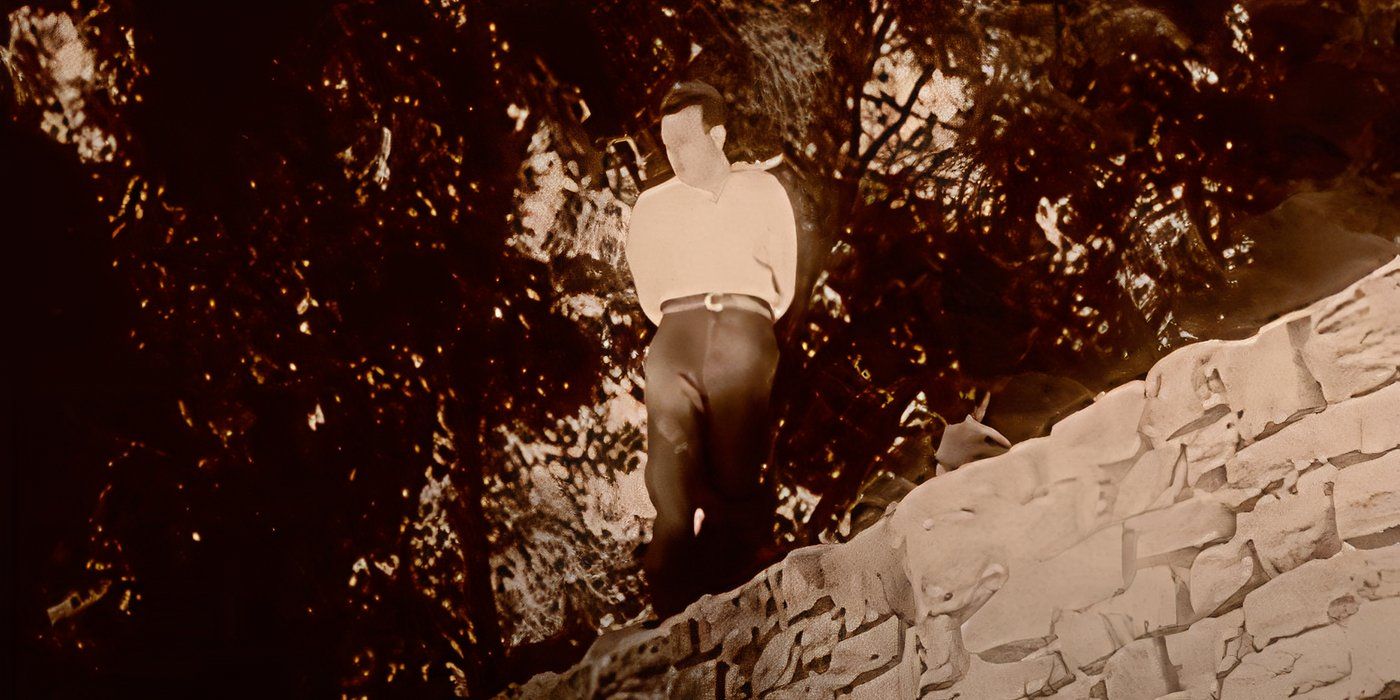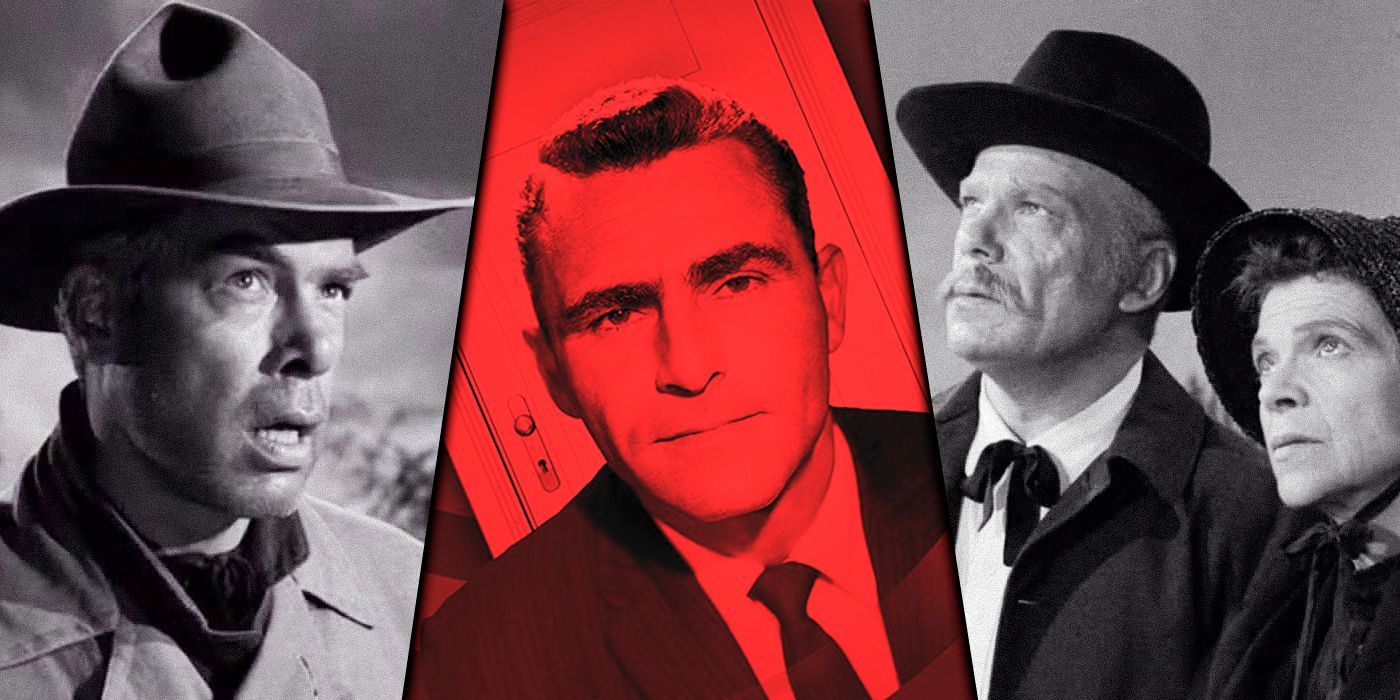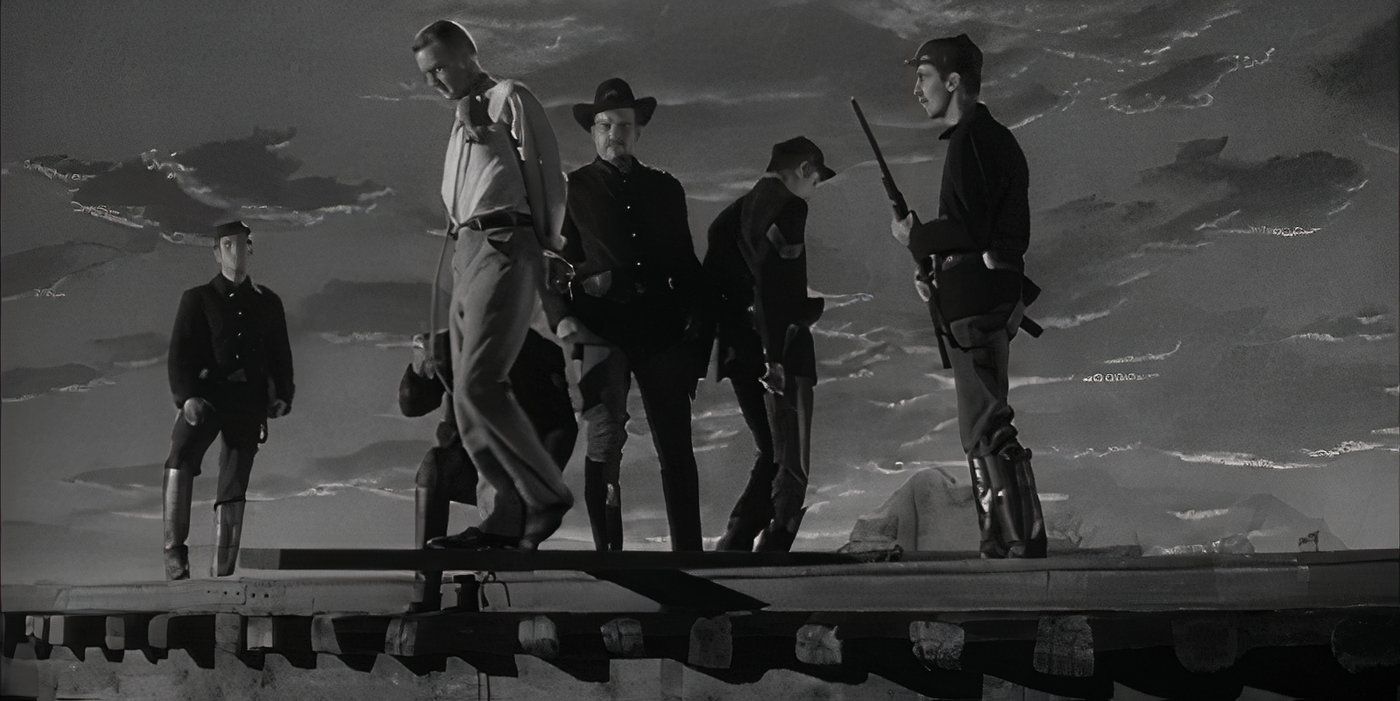The Twilight Zone remains one of the most groundbreaking pieces of television ever made. Rod Serling’s supernatural anthology series delivered dozens of classic episodes, cloaking moral lessons in clever twist endings, and ranging from the hilarious to the utterly terrifying. It lasted five seasons and was minted a masterpiece almost before it was off the air. In retrospect, it bowed out just in time, with its creative well running dry by Serling’s own admission. It thus avoided jumping the shark, and several direct reboots have only fitfully found the magic that it delivered consistently from beginning to end.
The Twilight Zone famously received a little help from an outside source. “An Occurrence at Owl Creek Bridge” is a supernatural anti-war movie which French filmmaker Robert Enrico shot in 1961, and appeared as an episode late in Season 5 as The Twilight Zone was wrapping up. It remains the only episode to come from an outside source, and yet its tone and content fit Serling’s series so perfectly, that the two seem made for each other. Serling himself expressed as much in his signature intro to the episode, and it helped get The Twilight Zone across the finish line with a flourish. In exchange, it received millions of new fans who continue to cherish it today.
“Owl Creek Bridge” Is Based on Real-Life War Experiences
Ambrose Bierce’s Haunted Tale Is a Surreal Masterpiece

“An Occurrence at Owl Creek Bridge” began as a short story by Ambrose Bierce, first published in The San Francisco Examiner in 1890 and included in the author’s 1891 short-story collection Tales of Soldiers and Civilians. His work often drew upon his experiences in the military, having had fought for the Union in the Civil War and participated in a number of notable battles. It also reflected the horrors of war in ways few other writers could aspire to. He also made numerous contributions to early American horror stories, and tomes like The Devil’s Dictionary reflected an ironic wit of the sort that The Twilight Zone adored.
|
Title |
Season |
Episode |
Written by |
Directed by |
Premiere Date |
|---|---|---|---|---|---|
|
“An Occurrence at Owl Creek Bridge” |
5 |
22 |
Ambrose Bierce & Robert Enrico |
Robert Enrico |
February 28, 1964 |
“An Occurrence at Owl Creek Bridge” is Bierce’s best-known work, and aptly incorporates many of the themes he became known for. It focuses on the subjective viewpoint of a Confederate saboteur, who is being hanged by the Union at the titular bridge. At the last moment, Providence appears to save him. The rope snaps, he drops into the creek below, and he’s able to escape the Union soldiers pursuing him. He proceeds on an increasingly surreal trip through the nearby woods in an effort to get back to his family. Just as he reaches their open arms, he feels his neck snap back. He dies in the noose, and the entire incident was a hallucination he experienced in the instant before the rope snapped.

Related
10 Best Western Episodes of The Twilight Zone, Ranked
TV Westerns were all the rage when The Twilight Zone first aired. The series often presented episodes that combined Westerns with horror or sci-fi.
The story has since been hailed as a masterpiece, both for its dark and surreal tone, and for its masterful use of subjective perspective. Its influence can be seen not only in other works of literature, but in filmmakers like David Lynch, who produce the same sense of the surreal. Terry Gilliam’s 1985 film Brazil and Adrian Lyne’s 1990 effort Jacob’s Ladder both reflect a good deal of Bierce’s sensibilities as well.
Earlier Adaptations Fall Short of Robert Enrico’s
The French Filmmaker Delivers a Perfect Version of the Story

Enrico’s version wasn’t the first adaptation of the story to reach the screen. Charles Vidor directed a silent short in 1929 called The Bridge, which updates the conflict to the 20th century, reducing the context while heightening the anti-war message. It can’t match Enrico’s power, but the silent format and Vidor’s striking use of imagery make it an effective adaptation regardless. Three decades later, the anthology series called Alfred Hitchcock Presents delivered a second version with Season 5, Episode 15, “An Occurrence at Owl Creek Bridge.” It makes the fatal mistake of adding a backstory and traditional dialogue, eliminating Bierce’s carefully crafted atmosphere and turning the protagonist into another over-confident jerk who gets what’s coming to him. It’s notable mainly for containing a meaty performance from a pre-star James Coburn.

Related
10 Most Heartbreaking Episodes of The Twilight Zone, Ranked
These heartwarming and hopelessly tragic tearjerkers are proof of The Twilight Zone’s emotional gravitas.
It took Enrico to deliver the definitive version, and while it wasn’t the last, it remains the one that every other adaptation will be measured against. He filmed it as part of a trilogy of Bierce adaptations, which received a theatrical release as the anthology film Au coeur de la vie (In the Midst of Life). “An Occurrence at Owl Creek Bridge” — released as La Rivière du hibou (Owl River) — was submitted for consideration separately at the Cannes Film Festival, where it won the Best Short Subject Award in 1962. One year later, it won the Academy Award for Best Live-Action Short Subject. It aired on The Twilight Zone a year after that.
Enrico’s superior approach is self-apparent, especially to anyone who chooses to compare it to the Hitchcock version. He keeps the dialogue to an absolute minimum, and lets the viewer adopt the protagonist’s point of view through increasingly dreamlike cinematography. The final twist comes suddenly, and fades out with a silent finality that brings Bierce’s message home. Small wonder it was showered with awards.
“Owl Creek Bridge” Came Along Just When The Twilight Zone Needed It
Serling’s Show Was at the End of Its Line
By Season 5, The Twilight Zone was rapidly running out of gas. Episode quality began to slip, and despite the presence of some of the series’ best episodes that season (including the likes of “Nightmare at 20,000 Feet,” and “Living Doll”), the number of fair-to-middling also-rans increased dramatically. Serling’s writing output during the series’ run was astonishing, writing or co-writing an astonishing 92 of the series’ 156 episodes. Burnout had set in, however, and by Serling’s own admission, his ability to disseminate good material from bad had begun to slip.

Related
10 Old-School Twilight Zone Episodes That Are Still Awesome Today
The Twilight Zone is built to last, thanks to timeless observations about human nature that never change. Here are ten episodes that still work today.
To make matters worse, some of his key creative partners were no longer a part of the equation. Charles Beaumont, who himself had contributed many of The Twilight Zone’s best episodes, stepped away from the show due to declining health, while producer Bert Garnet left early in the season. The time had come, and while The Twilight Zone finished its original run gracefully, there was little question of whether it should go on.
It should come as no surprise, then, that it would turn to “An Occurrence at Owl Creek Bridge” to fill a slot in its schedule. The movie fit The Twilight Zone’s aesthetic perfectly, and indeed Bierce’s work served as an indirect inspiration for the series’ tone and intent. It aired on Feb. 28, 1964, about two-thirds of the way through the season and just as signs of fatigue were really beginning to set in. Serling treated it with especial care in his opening monologue by refraining from inserting himself into the drama, as was his habit for most episodes at the time. Instead, he addresses the camera directly:
Tonight, a presentation so special and unique that, for the first time in the five years we’ve been presenting The Twilight Zone, we’re offering a film shot in France by others.
It’s particularly telling that he doesn’t spell out the scenario, either then or in the closing monologue. The whole point of the monologue is to deliver any needed plot exposition swiftly and effectively so that the story can get down to business. The fact that he refrains shows the respect he holds for Enrico’s efforts. The Twilight Zone featured a few winning episodes after “An Occurrence at Owl Creek Bridge,” notably Season 5, Episode 25, “The Masks,” and Season 5, Episode 30, “Stopover in a Quiet Town.”
The film’s sheer quality sets it as a high point, however. While it shines on its own merits as an anti-war film, it will forever be connected to Serling’s series. In retrospect, it’s almost a perfect fit. If a viewer were to skip the opening monologue, they might think it was produced by the same team that made The Twilight Zone’s other amazing episodes. Bierce’s prose may never have a more ideal visual expression, and in The Twilight Zone, it found the ideal platform to show an audience attuned to the surreal and the macabre just what it had to offer.
The Twilight Zone is currently streaming on Paramount+.








